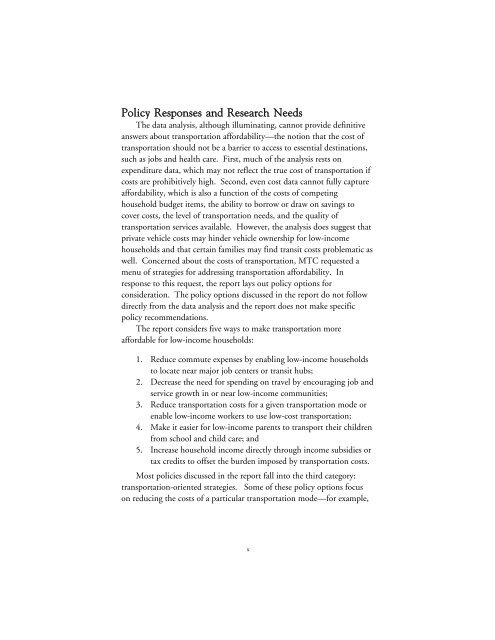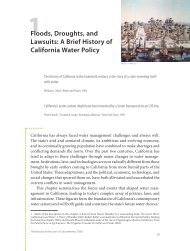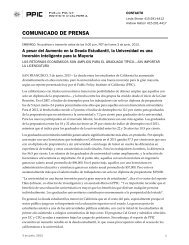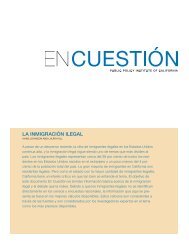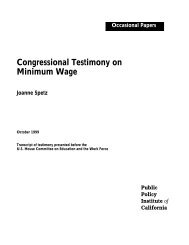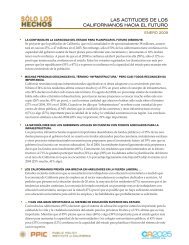Transportation Spending by Low-Income California Households ...
Transportation Spending by Low-Income California Households ...
Transportation Spending by Low-Income California Households ...
Create successful ePaper yourself
Turn your PDF publications into a flip-book with our unique Google optimized e-Paper software.
Policy Responses and Research Needs<br />
The data analysis, although illuminating, cannot provide definitive<br />
answers about transportation affordability—the notion that the cost of<br />
transportation should not be a barrier to access to essential destinations,<br />
such as jobs and health care. First, much of the analysis rests on<br />
expenditure data, which may not reflect the true cost of transportation if<br />
costs are prohibitively high. Second, even cost data cannot fully capture<br />
affordability, which is also a function of the costs of competing<br />
household budget items, the ability to borrow or draw on savings to<br />
cover costs, the level of transportation needs, and the quality of<br />
transportation services available. However, the analysis does suggest that<br />
private vehicle costs may hinder vehicle ownership for low-income<br />
households and that certain families may find transit costs problematic as<br />
well. Concerned about the costs of transportation, MTC requested a<br />
menu of strategies for addressing transportation affordability. In<br />
response to this request, the report lays out policy options for<br />
consideration. The policy options discussed in the report do not follow<br />
directly from the data analysis and the report does not make specific<br />
policy recommendations.<br />
The report considers five ways to make transportation more<br />
affordable for low-income households:<br />
1. Reduce commute expenses <strong>by</strong> enabling low-income households<br />
to locate near major job centers or transit hubs;<br />
2. Decrease the need for spending on travel <strong>by</strong> encouraging job and<br />
service growth in or near low-income communities;<br />
3. Reduce transportation costs for a given transportation mode or<br />
enable low-income workers to use low-cost transportation;<br />
4. Make it easier for low-income parents to transport their children<br />
from school and child care; and<br />
5. Increase household income directly through income subsidies or<br />
tax credits to offset the burden imposed <strong>by</strong> transportation costs.<br />
Most policies discussed in the report fall into the third category:<br />
transportation-oriented strategies. Some of these policy options focus<br />
on reducing the costs of a particular transportation mode—for example,<br />
x


